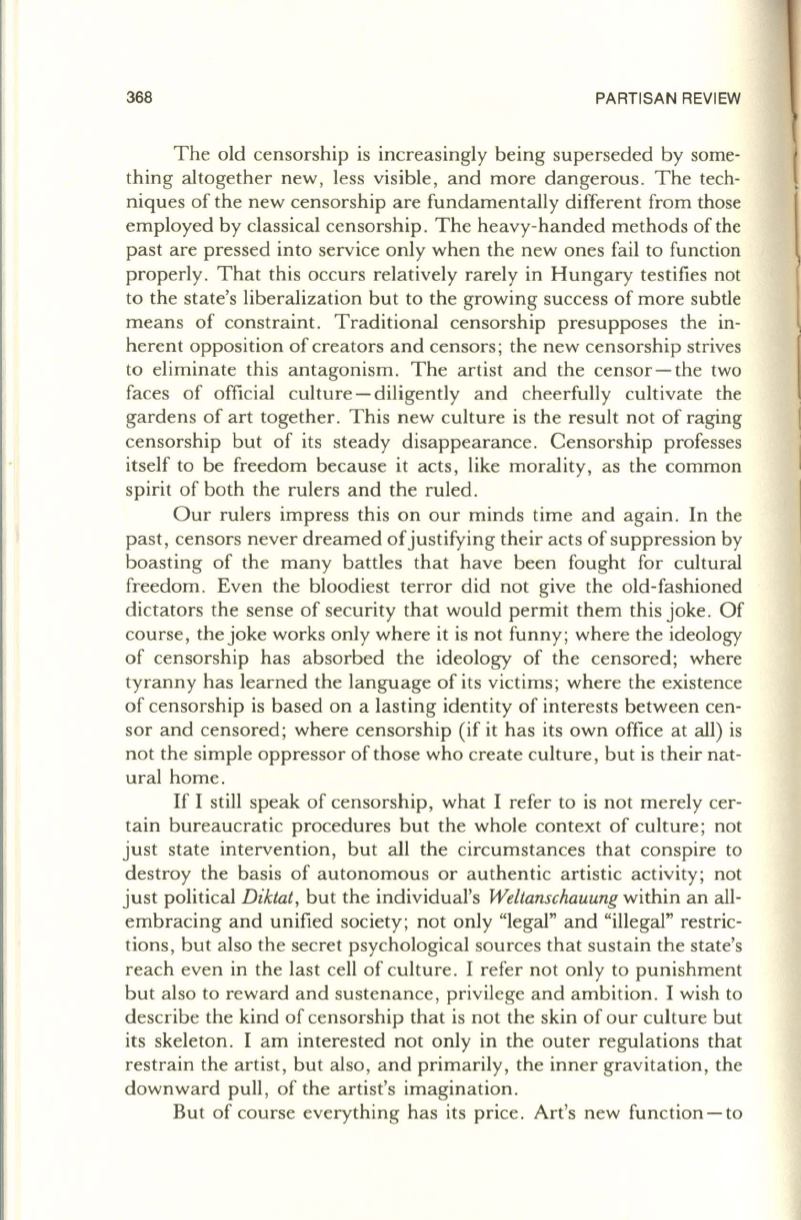
368
PARTISAN REVIEW
The old censorship is increasingly being superseded by some–
thing altogether new , less visible, and more dangerous . The tech–
niques of the new censorship are fundamentally different from those
employed by classical censorship . The heavy-handed methods of the
past are pressed into service only when the new ones fail to function
properly. That this occurs relatively rarely in Hungary testifies not
to the state's liberalization but to the growing success of more subtle
means of constraint. Traditional censorship presupposes the in–
herent opposition of creators and censors; the new censorship strives
to eliminate this antagonism. The artist and the censor- the two
faces of official culture - diligently and cheerfully cultivate the
gardens of art together. This new culture is the result not of raging
censorship but of its steady disappearance. Censorship professes
itself to be freedom because it acts, like morality, as the common
spirit of both the rulers and the ruled.
Our rulers impress this on our minds time and again . In the
past, censors never dreamed ofjustifying their acts of suppression by
boasting of the many battles that have been fought for cultural
freedom . Even the bloodiest terror did not give the old-fashioned
dictators the sense of security that would permit them this joke. Of
course, the joke works only where it is not funny; where the ideology
of censorship has absorbed the ideology of the censored; where
tyranny has learned the language of its victims; where the existence
of censorship is based on a lasting identity of interests between cen–
sor and censored; where censorship (if it has its own office at all) is
not the simple oppressor of those who create culture, but is their nat–
ural home.
If
I still speak of censorship, what I refer to is not merely cer–
tain bureaucratic procedures but the whole context of culture; not
just state intervention, but all the circumstances that conspire to
destroy the basis of autonomous or authentic artistic activity; not
just political
Diktat,
but the individual's
Weltanschauung
within an all–
embracing and unified society; not only "legal" and "illegal" restric–
tions, but also the secret psychological sources that sustain the state's
reach even in the last cell of culture. I refer not only to punishment
but also to reward and sustenance, privilege and ambition. I wish to
describe the kind of censorship that is not the skin of our culture but
its skeleton. I am interested not only in the outer regulations that
restrain the artist, but also, and primarily, the inner gravitation, the
downward pull, of the artist's imagination.
But of course everything has its price. Art's new function-to


